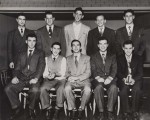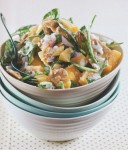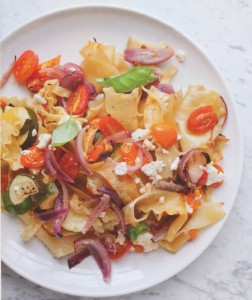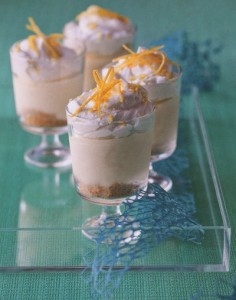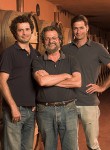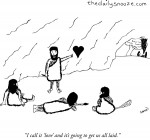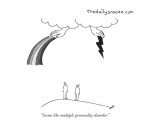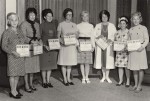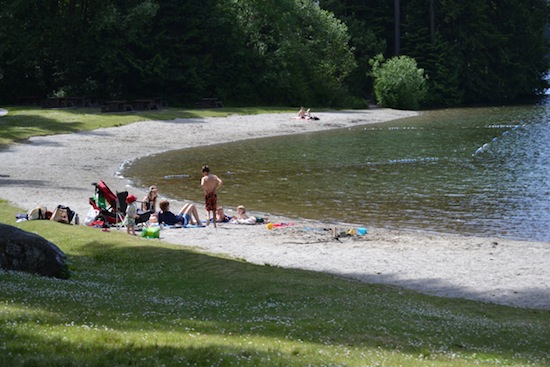For those who can’t make it to Pips Neapolitan Pizza in Jerusalem for its panzanella, pictured above, the bread salad recipe here is similar. (photo by Barry A. Kaplan/Jerusalem)
Admittedly, I am very old-fashioned in my kitchen. I have two sets of antique, wood card-catalogue drawers where I store recipe cards, plus another set of drawers that a former neighbor, a wood worker, made especially for me. And, yes, I use these indexed recipes all the time. I have a variation of Post-it notes with a blue tab sticking up that I attach to any recipe cards I use very often so I can find them easily. When thinking about which recipes to share here, I went to the tab labeled “salads around the world,” and picked out these, as they’re perfect for summer.
BREAD SALAD
Italians call it panzanella. In Arabic, fatt means “crush” and, with the Turkish suffix oush, it becomes fattoush, particularly popular in Lebanon. Any kind of crusty, heavy, dense, day-old bread will work.
3 medium tomatoes, chopped, or 16 cherry or plum tomatoes, halved
3 Kirby cucumbers, cut up, not peeled
1/2 red pepper, chopped
1/2 green pepper, chopped
1/2 another color pepper, chopped
4 green onions, sliced
1/3 cup black olives
3 tbsp chopped fresh parsley or cilantro
2 cups cubed bread
8 hard-boiled eggs, chopped
Dressing:
1/4 cup olive or canola oil
2 tbsp red wine vinegar
2 garlic cloves, minced
1 tsp paprika
salt and pepper to taste
Three to four hours before serving, combine oil, vinegar, garlic, paprika, salt and pepper in a jar. Close the lid, shake and set aside. In a salad bowl, combine tomatoes, cucumber, peppers, onions, olives and parsley. Add 1/4 cup dressing, mix and refrigerate about two hours.
One to two hours before serving, add bread cubes and toss; refrigerate for half an hour.
When ready to serve, sprinkle chopped eggs over salad and remaining dressing, and mix. Makes four servings.
ANTIPASTO SALAD
Traditionally, an antipasto is the first course served before an Italian meal, but this salad is a nice start for any meal.
2 cups bite-size pieces romaine lettuce
2 cups bite-size pieces head lettuce
1/3 cup shredded white cabbage
1/3 cup shredded red cabbage
1 small red onion, chopped
1 small red pepper, chopped
1 small green pepper, chopped
1/3 cup cherry tomatoes, halved
1/8 cup chopped black olives
1/2 cup artichoke hearts, drained and chopped
1/3 cup mozzarella cheese, cubed
1/2 cup any other kosher Italian cheese, cubed
Dressing:
1/3 cup olive or canola oil
2 tbsp red wine vinegar
1 garlic clove, crushed
dash paprika
dash oregano
dash basil
dash dry mustard
Mix dressing ingredients in a jar. Close lid and shake well. Set aside.
In a salad bowl, combine lettuces, cabbages, onion, peppers, tomatoes, olives, artichoke hearts and cheeses.
Just before serving, pour dressing over salad and toss. Makes four servings.
ASIAN COLESLAW
When I serve Asian food, particularly stir fry, I sometimes would like a side dish other than rice or noodles, and this coleslaw fits. In Israel, we don’t have water chestnuts readily available, so I substitute with cooked kohlrabi, which is readily available and inexpensive.
1 cup shredded bok choy
1/2 cup shredded carrots
1 cucumber, diced
1/2 cup sliced water chestnuts or cooked kohlrabi
1/2 diced red pepper
1 tbsp chopped fresh cilantro
1/4 cup bean sprouts
Dressing:
3 tbsp rice vinegar
1/3 cup sesame oil
1 tsp sugar
1 tsp low-sodium soy sauce
1 garlic clove, minced
1/2 tsp ginger (optional)
In a salad bowl, combine bok choy, carrots, cucumber, water chestnuts (or kohlrabi), red pepper, cilantro and bean sprouts.
In a jar, combine rice vinegar, oil, sugar, soy sauce, garlic and ginger. Close with a lid and shake well.
Set aside.
Just before serving, add dressing and toss. Makes four servings.
Sybil Kaplan is a foreign correspondent, lecturer, book reviewer and food writer in Jerusalem. She has compiled nine kosher cookbooks. She leads weekly walks in English in the Jewish produce market, Machaneh Yehudah, and writes the restaurant features for Janglo, the oldest, largest website in Israel for English-speakers.

